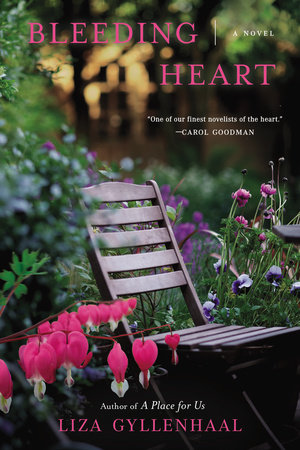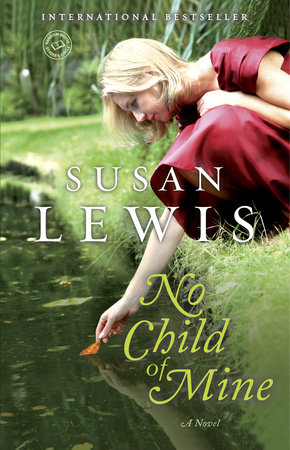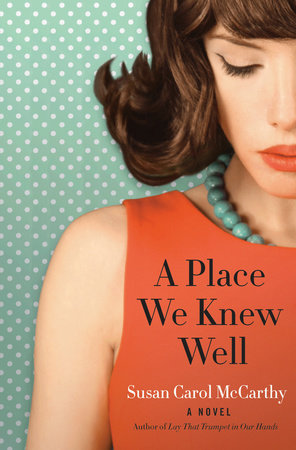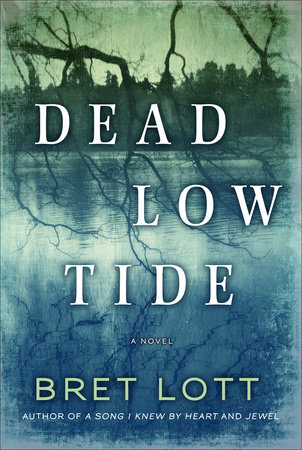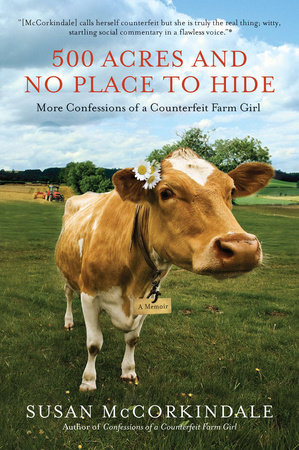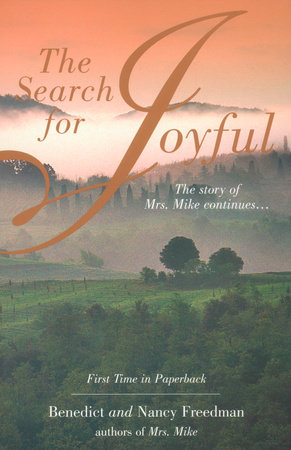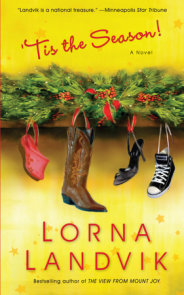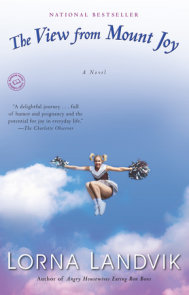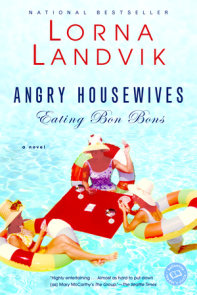Author Q&A
A Conversation with Lorna Landvik
Q: Was Patty Jane’s House of Curl inspired by a real-life place?
A: No, my mother insisted that with our wavy hair, we didn’t need the services of a beauty shop; the first time I was inside one was when I got sprayed and lacquered for my high school Sno Ball. Nawadaha Boulevard, where the House of Curl is situated, is a real street in Minneapolis, but that’s the only part of it that’s not fiction.
Q: You write eloquently of the burdens of real love. And the Dobbin sisters certainly shoulder their share of such bur-dens. What does this mean to you?
A: With love comes responsibility–you have to take care of those you love. Ideally, that care is returned to you, but sometimes it’s an uneven exchange. As children, Patty Jane and Harriet had to take care of their parents, and later Patty Jane has to take care of her distraught sister. What I liked about Patty Jane was that she was never a martyr in her love, knowing when (for the sake of others as well as for herself) she had to let go.
Q: For Thor, "[h]is father’s death had taught him early that within love lay the possibility of great pain." This life lesson comes to most of us sooner or later. Why do you think people insist on taking this chance?
A: I think we all believe in " ’tis better to have loved and lost than never to have loved at all." I think my characters, like myself, will always believe that the rewards of loving and being loved far outweigh any attendant hurt or pain.
Q: Do you believe in love at first sight, like the love that struck Avel and Harriet?
A: I don’t know about love at first sight, but I definitely believe in extreme attraction at first sight, having experienced that with my husband back when he crashed my high school dance.
Q: Patty Jane and Harriet are estranged when they both find new love. Is this a coincidence?
A: Maybe it was because they were apart and didn’t have the tremendous support of each other’s love that they became more open to love from other sources . . . or maybe it was just coincidence.
Q: Do you find it more difficult to write certain characters– for example, Ione, who is rather stoic and a woman of few words?
A: Having grown up around Norwegian Americans, I found Ione a very easy character to write about. The emotional center of a character, the way they are, is the easiest thing for me to capture.
Q: Why does Patty Jane name her daughter Nora, after the heroine in Ibsen’s A Doll’s House?
A: Because Patty Jane was a feminist long before she knew what the word meant!
Q: Patty Jane worries about the impact her daughter’s good looks will have on her life. How can beauty be a trap for women as well as for men?
A: Patty Jane didn’t want Nora to slide by on something so serendipitous as good looks; she wanted her daughter to know that you are what you are, not what you look like. I think beauty can be a trap for both sexes because people make stereotypical assumptions: You’re not supposed to be smart or funny, etc., if you’re good-looking. In an attempt to assuage their guilt over being given the gift of beauty, I think some people subjugate their personalities to lessen hostility from others. I know as a former high-fashion model, I’ve had to do that a lot. (That’s a joke.)
Q: This novel is very much about women finding the space to express themselves and realize their potential. Why can this be so difficult for women, in particular, to do?
A: The House of Curl happened to be a place that was very wel-coming, thanks to the tone Patty Jane, Ione, and Harriet set. When I was a kid, my mother met with the other neighbor-hood mothers for an almost-daily coffee break; I’ve sat for hours with mothers in my own neighborhood, talking about everything from potty-training to religion to musical scores. Those very satisfying neighborhood friendships–formed over the backyard fence or at the corner beauty shop– aren’t as common today because so many people work out- side the home. I do, however, think that book clubs are the beauty parlors of the millennium–a place where women meet regularly and talk about everything.
Q: What pushes Harriet over the edge and into a bottle? Why does it happen at the particular moment it does?
A: Poor Harriet–she didn’t have Patty Jane’s innate strength, so the loss of Avel throws her for a loop she can’t climb out of. She’s also had the example from her parents as to the use of alcohol to medicate pain.
Q: "Booze is like a mean old cur who goes after those who won’t bite back. People with big hearts and sad souls." Could you discuss the meaning of this passage?
A: Life can beat a person down, and I do think that often it’s the most sensitive types who don’t trust their own strength enough to fight back. Of course, some people are unlucky and get far more than their share of pain and trouble–and alcohol helps them (or makes them think they’re being helped) cope within the miasma.
Q: Why do you think it is so hard for people to be good to themselves?
A: I’m not exactly sure. Maybe because they’re given poor examples from their parents; maybe because the negative seems to be heard more easily than the positive; maybe because they believe that self-love is somehow . . . selfish.
Q: Do you have a favorite character in this novel?
A: I really do like them all, but if I had to choose upon penalty of a life without chocolate, I’d probably choose Patty Jane. In the prologue, Nora describes her family as having "been knocked down more times and with harder punches than I and still found strength to stagger to their feet." Not only did Patty Jane stagger to her feet, once she was up, she danced.
Q: If you could, is there anything you would change about this novel?
A: The original version is longer–my agent and I joke that one day we will release the "complete and unabridged ver-sion," but all in all, I’m pretty pleased with it as is.
Q: Do you do research for your novels?
A: For Patty Jane, I went to our central library downtown and had women’s magazines from the fifties and sixties (Ship ‘N’ Shore blouses–2 for $4.98!) brought up from the basement stacks. I also studied up on the music and cars of that era. My characters dictate to me what they do for a living and the era they live in and then I’ll research to make that time and profession believable–fortunately I’ve yet to have a character come into my head who tells me she’s an astro-physicist living in another galaxy in the year 10,002.
Q: When you are writing, do you move forward chapter by chapter or is the process less orderly? What is your writing process?
A: I start a book when two characters come into my head. They are vivid enough to make me sit up and take notice, and usually (and politely, I might add) they bring the title along with them. I begin to write, not knowing what their story is, but knowing I’m interested enough in them to find out. I write without an outline, and while I may have ideas where the story is going, the characters will often choose a different path. I write, learn something new, go back and fill something in, rewrite, and repeat the process until the book is done.
Q: How did you go about becoming a published author? Any advice for aspiring writers out there?
A: I went to my local library and studied The Writer’s Market. I wrote what they advised–a snappy letter that I hoped would intrigue agents and make them want to read my book. I sent out dozens and dozens of letters, and once I got an agent I amassed about thirty rejections. But I was deter-mined that Patty Jane and Co. were going to see the light of day; I was not going to take someone’s "no" for my final answer. My advice to aspiring writers: Try to create real characters with real problems–if you care about them, chances are a reader will too. And most important: NEVER GIVE UP!
Q: Who gets to read your work-in-progress?
A: I try to write the first draft without anyone seeing it, although occasionally my editor likes to see what I am working on.
Q: In addition to being a writer, you are also an actress and a comedian. How does your performance art impact your literary art and vice versa?
A: I love being in front of an audience–whether as a speaker, at a reading, performing improvisational comedy, or in a play. The characters I portray onstage want to have a voice but don’t necessarily want to be heard in a book. Performing comedy in particular has sharpened my ear with regard to dialogue and made me more aware of the importance of rhythm in language.
Q: If you had to make up a list of books for a reading group, what would you include on it?
A: Well, all of mine, of course–and after those I highly recom-mend anything by Michael Malone, particularly Handling Sin; Madeleine’s Ghost by Robert Girardi; Sophie’s World by Jostein Gaarder. Other favorites are To Kill a Mockingbird by Harper Lee, anything by Flannery O’Connor, Staggerford by Jon Hassler, and, of course, you can’t go wrong with Charles Dickens.
Q: Are you working on anything right now that you would like to share with your readers?
A: I’m superstitious about talking about something before it’s done, but I will say that anyone in a book club should enjoy it.




